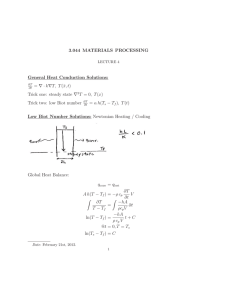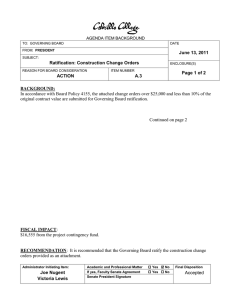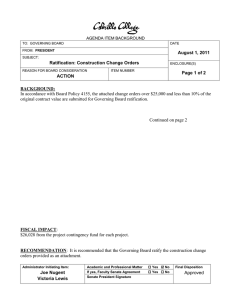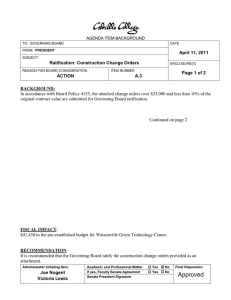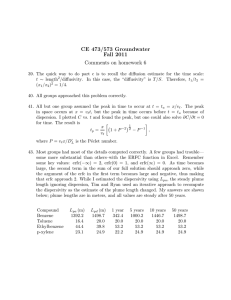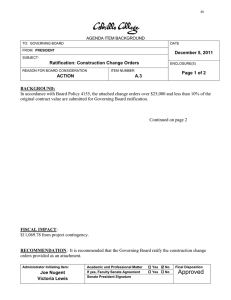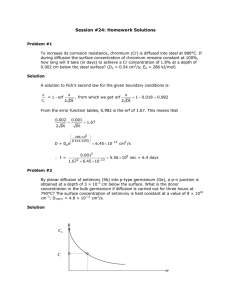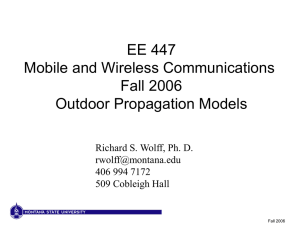Probability density of binary signal
advertisement
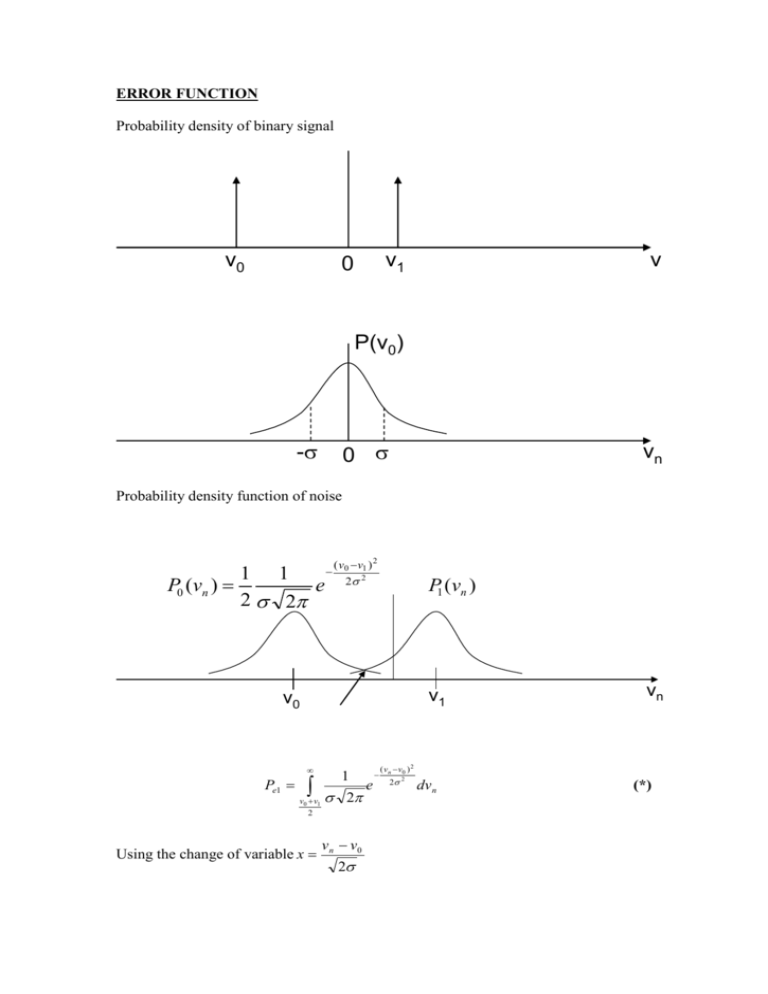
ERROR FUNCTION Probability density of binary signal v0 v1 0 v P(v0) 0 - vn Probability density function of noise 1 1 P0 (vn ) e 2 2 ( v0 v1 ) 2 2 2 P1 (vn ) v1 v0 Pe1 v0 v1 2 Using the change of variable x 1 2 v n v0 2 e vn ( v n v0 ) 2 2 2 dv n (*) This becomes 1 Pe1 e x 2 dx (**) v1 v0 2 2 The incomplete integral cannot be evaluated analytically but can be recast as a complimentary error function, erfc(x), defined by 2 erfc( z ) e x2 dx z Equations (*) and (**) become Pe1 1 v v erfc 1 0 2 2 2 erfc( z ) 1 erf ( z ) Pe1 Pe 0 1 v1 v0 1 erf 2 2 2 v0 v1 2 1 2 e ( vn v1 ) 2 2 2 dv n It is clear from the symmetry of this problem that Pe0 is identical to Pe1 and the probability of error Pe, irrespective of whether a ‘one’ or ‘zero’ was transmitted, can be rewritten in terms of v = v1 – v0 Pe 1 v 1 erf 2 2 2 for unipolar signalling (0 and v) for polar signalling (symbol represented by voltage v ) 2

